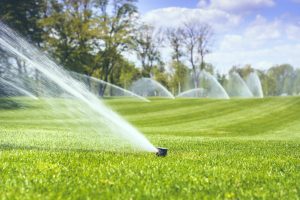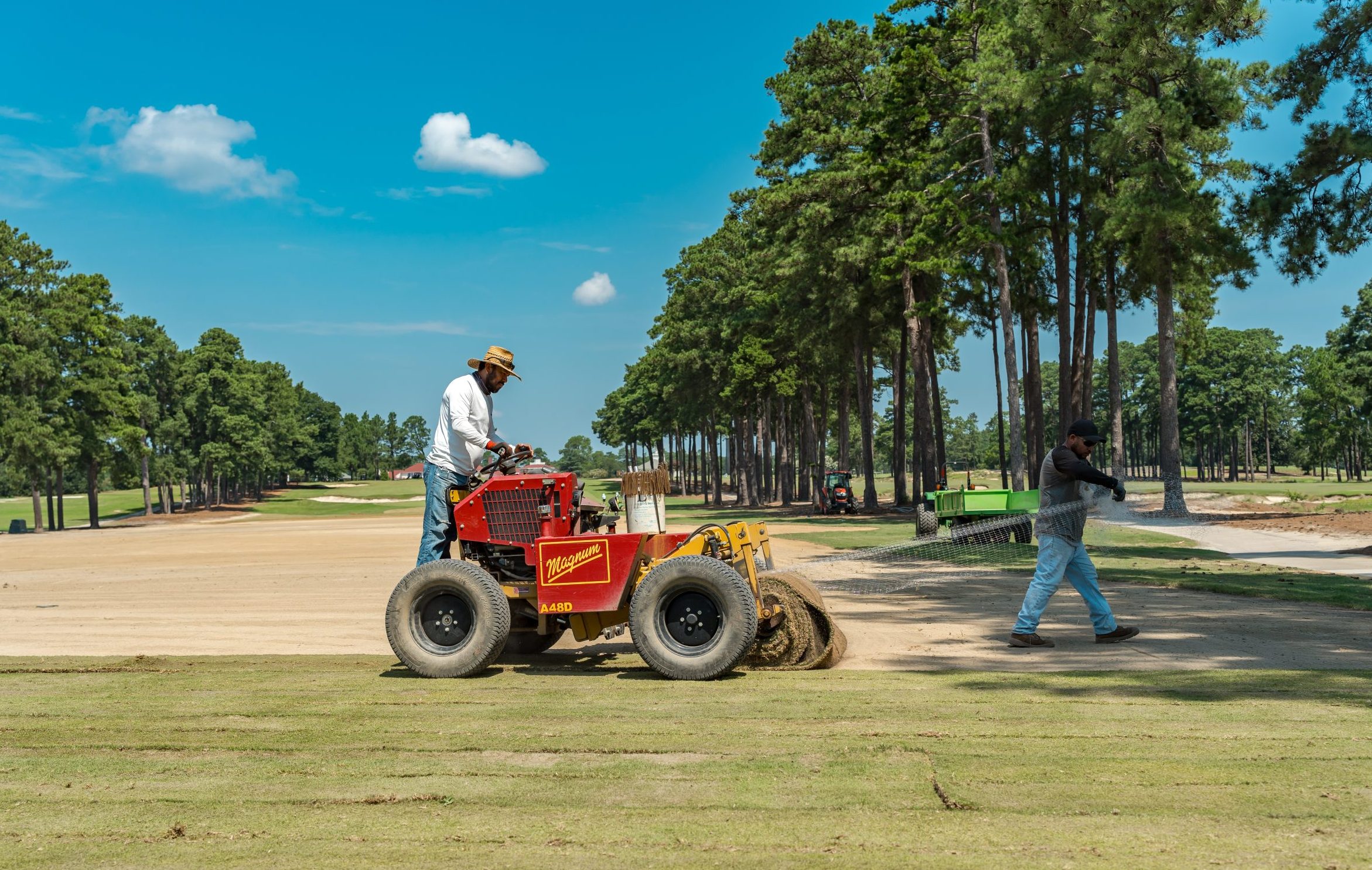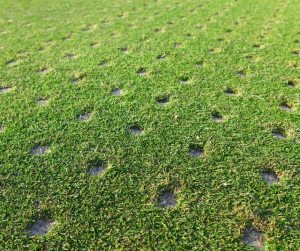When summer heat arrives in the Southeast, natural turfgrass—from high-traffic golf course fairways to premium residential lawns—faces its biggest seasonal test. Whether you’re a landscape contractor, golf course superintendent, or turfgrass manager for municipal parks, professional-grade turf maintenance in summer requires strategic planning, smart inputs, and responsive care.
At Buy Sod/SodStar, we specialize in supplying blue-tag certified sod varieties like TifTuf Bermudagrass, Zeon Zoysiagrass, and Prizm Zoysia—each developed for high performance under Southeast conditions. But even the best turfgrass needs precise summer care to maintain color, density, and health under extreme heat and variable rainfall.
Here are our top professional turfgrass maintenance tips to keep your natural turf thriving through the summer months:
1. Dial in Your Irrigation Strategy

Inconsistent watering is one of the fastest ways to stress turf during summer. In the Southeast’s hot, humid conditions, deep, infrequent irrigation encourages deeper root systems and reduces disease risk.
- Early morning irrigation (between 4 a.m. – 9 a.m.) helps reduce evaporation loss and leaf wetness periods.
- TifTuf Bermudagrass, a SodStarPRO-exclusive variety, is SmartDrop™ Certified for drought tolerance and water-use efficiency—perfect for sites with water restrictions.
- Use soil moisture sensors or audit your irrigation system weekly to catch clogged heads or uneven distribution.
2. Mow for Health, Not Just Appearance
Mowing frequency and height should be adjusted during peak summer growth. Avoid removing more than 1/3 of the leaf blade at once, and keep blades razor sharp to minimize turf stress.
- For TifTuf Bermudagrass, maintain a mowing height of 0.5″–1.5″ depending on use.
- Zeon Zoysia prefers a mowing height of 1″–2″.
- In shaded or less trafficked areas, raise your mower deck to promote deeper roots and shade the soil.
3. Feed Strategically—Not Excessively
Summer is not the time for heavy nitrogen applications. Overfertilization during extreme heat can stress turf, increase mowing needs, and exacerbate disease problems.
- Apply a balanced, slow-release fertilizer in early summer.
- Monitor for signs of nutrient deficiency, particularly potassium, which helps with drought tolerance and disease resistance.
- For high-traffic areas, consider spoon-feeding nutrients every 3–4 weeks based on turf response.
4. Stay Ahead of Weeds and Pests
While spring pre-emergent herbicides do heavy lifting, spot-spray post-emergents are essential to control breakthrough weeds like crabgrass or goosegrass.
- Avoid blanket applications unless necessary—spot treatment reduces turf stress.
- Watch for summer pests like armyworms, sod webworms, and mole crickets, particularly in Bermuda and zoysia varieties.
- Incorporate integrated pest management (IPM) strategies where possible to reduce chemical reliance.
5. Aerate and Topdress with Purpose
If you haven’t already, core aeration in early summer relieves compaction and promotes stronger roots before peak heat. Pairing aeration with topdressing (especially on golf courses or sports fields) improves surface uniformity and drainage.
- Use sand-based topdressings on sandy soils, or compost blends to boost organic matter.
- Avoid heavy topdressing during drought or active pest infestations.
Trust SodStarPRO for Proven Turfgrass Solutions
With decades of experience serving the Southeast’s turf professionals, SodStarPRO is more than a sod supplier—we’re your performance partner. From tailored sod rollout services to selecting the right grass variety for each project, we help ensure your turf thrives all year long.
Need a quote for TifTuf Bermuda, Zeon Zoysia, or Select Tall Fescue?
📞 Connect with our team or request a quote online today.


